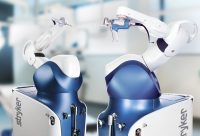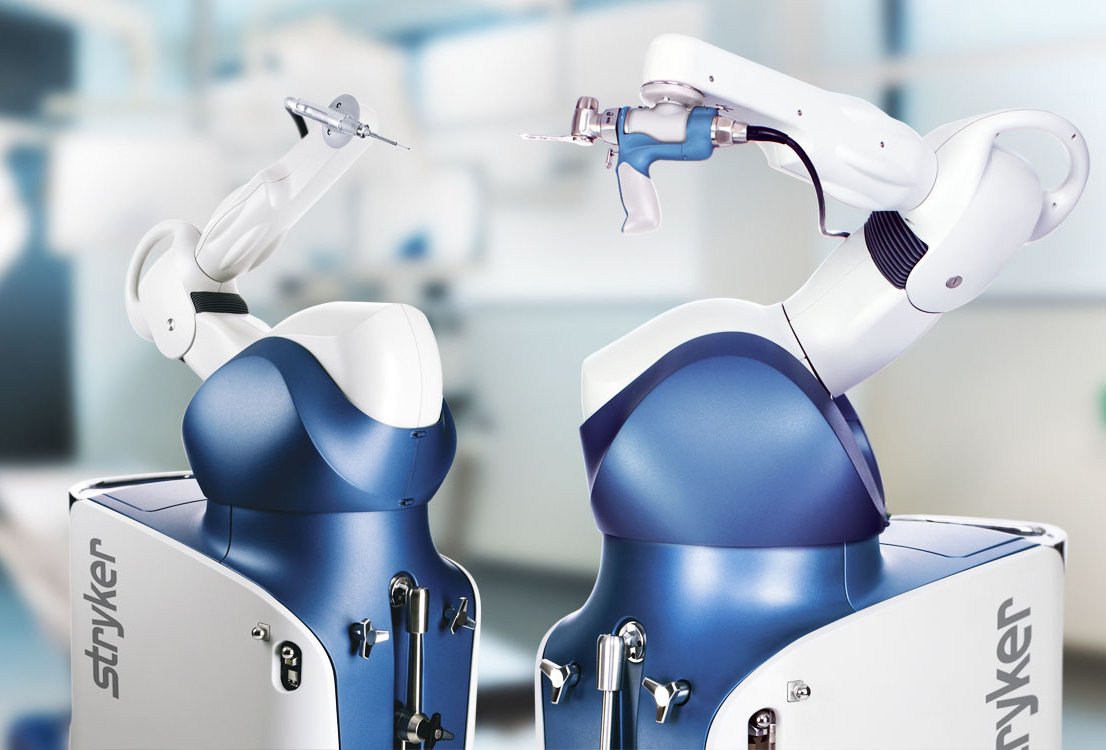
Mako robot-assisted total hip replacement
Modern hip replacement surgery was pioneered by Sir John Charnley in the UK in the early 1960s. The procedure and implant used were developed and refined over the next 30…

Modern hip replacement surgery was pioneered by Sir John Charnley in the UK in the early 1960s. The procedure and implant used were developed and refined over the next 30…

Total hip replacement surgery is one of the most successful, cost-effective and safest operations in the world today. However, despite its overall success rate, hip replacement surgery is a major…

With around 80,000 carried out each year, hip replacements are one of the most common elective surgical procedures in Britain. We speak to 41-year-old Rhys Gwilliam who managed 16 years…

Over the past 20 years, surgeons and industry have fine-tuned not only the implants but also the bearings used so replacement surgery can now be considered in younger patients.
Whilst there has been some development in the operative technique, such as less invasive and soft tissue sparing approaches allowing patients to be safely discharged within 2 or 3 days, what has not really improved is the accuracy that the surgeons can implant the hip replacement. To date, it has still been down to “experience and eyeballing the position and alignment” during the operation. Getting this right has a major influence not only on achieving equal leg lengths but also on optimising muscle function and reducing post-operative limping.
In trying to find the best outcome for themselves the patient’s only option was to find a well-trained and experienced specialist surgeon often following a recommendation by their GP or by a friend or colleague.
Whilst choosing a surgeon is still essential for achieving the desired outcome, given that we live in an age of technology and everyone of all ages relies on the internet and trusts computer technology on a daily basis, surely using a computer to help plan and a robot to assist in executing the surgery will aid even the most experienced surgeon to be more accurate with regard to both implant positioning and alignment?
Robotic-assisted surgery was developed in the USA by Mako Surgical in 2006. Stryker, one of the largest Orthopaedic implant companies in the world, saw the potential of this technology and purchased Mako in 2013. Stryker announced in early 2015 it had been granted FDA-approval for its robotic hip and knee replacements.
In essence, Mako is a surgical assistance system combining a robotic arm and a computer allowing the surgeon to be even more precise at the time of the operation. The surgeon is always ‘in control’ of the robotic arm manoeuvring it but also utilising feedback from the robotic arm to the computer to be more accurate with regard to implant placement and alignment.
Mr Burwell visited Stryker’s headquarters in 2016 to witness the Mako robotic-arm assisted technology first hand. In December 2017 Mr Burwell attended surgery in Exeter with Professor John Timperley, where the first Mako robot in the UK was sited. Mr Burwell became a ‘Mako certified’ hip replacement specialist by Stryker in November 2018 and Circle Bath introduced Mako robotic-arm assisted replacements in February 2019.
What is the difference between a ‘standard’ hip replacement and a Mako robotic-arm assisted one? Surgeons have been using 2-D digital x-rays for the past decade to plan surgery. Mako requires a pre-operative CT scan which allows for patient-specific 3-D digital planning, which is far more accurate than 2-D planning.
During the operation, the Mako computer and robotic arm allow the surgeon to place implants with much greater precision and to reduce any variability. There are already numerous research articles in the Orthopaedic literature that demonstrate improved accuracy of component position1, improved patient-reported outcomes2, demonstrates favourable short-term outcomes and does not result in higher complication rates compared to non-robotic THA3.
Mako has been widely available in the USA since 2015 and has proven to be a safe technology with over 600 Mako robots in use worldwide.
References
1 Comparison of Robotic-assisted and Conventional Acetabular Cup Placement in THA: A Matched-Pair Controlled Study
DombBG, El BitarYF, SadikBS, Stake CE, BotserIB
ClinOrthopRelatRes; 2014 , Vol 472: 329-36
2 Improved Functional Outcomes with Robotic Compared with Manual Total Hip Arthroplasty
Bukowski BR, Anderson P, KhlopasA, ChughtaiM, Mont MA, IllgenRL
Surgical Technology International XXIX; Orthopaedic Surgery; Sept 2016
3 Robotic-Arm Assisted Total Hip Arthroplasty – Clinical Outcomes and Complication Rate
ItayPerets, John P. Walsh, Mary R. Close, Brian Mu, Leslie Yuen, Benjamin G. Domb.
IntJ Med Robotics ComputAssist Surg. 2018;14:e1912.
